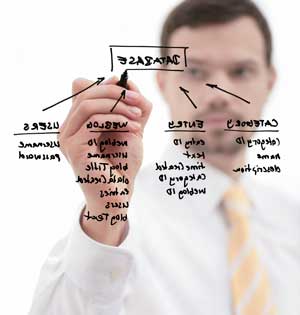User:Jasper van Loenen/grad/draft proposal: Difference between revisions
| Line 22: | Line 22: | ||
== References == | == References == | ||
The first few: | The first few:<br /> | ||
Hoffmann, E.T.A., (1816) The Sandman | * Hoffmann, E.T.A., (1816) The Sandman<br /> | ||
N. Katherine Hayles, (2005) My mother was a computer, The University of Chicago Press | * N. Katherine Hayles, (2005) My mother was a computer, The University of Chicago Press<br /> | ||
R Barbrook (2005) Imaginary Futures, | * R Barbrook (2005) Imaginary Futures, | ||
Revision as of 11:37, 10 October 2012
Tentative Title
< Insert Very Tentative Title Here >
General Introduction
I'm looking in to the way we perceive the computers and programs we use. Previously I've looked at this from the field of interaction design: how do we use them, why in that way and what other ways are there. Now I'm more interested in how we see them. Why do we sometimes see them almost as living beings. And would it be possible to see them as humans?
Relation to previous practice
In my previous work I searched for ways to connect invisible digital systems to physical interfaces. My first big project in this area was called Test Screen and basically consisted out of groups of dials and switches (96 in total) around a flatscreen monitor, set in a large wooden panel. I wrote a small computerprogram that would display an image similar to the old television testscreens and each of the dials and switches was connected to a part of the script of this program. By manipulating these controls, the audience was able to change my code and in that way what would happen on the screen. I choose to not use a generic computer with keyboard and mouse but to built a custom interface as a way to get the audience more involved, since for many using such an unknown interface is far more appealing - and telling by the time some visitors spent at the installation it worked.
Later I made The Poking Machine (TPM) with Bartholomäus Traubeck. Users can poke each other on Facebook by clicking a button on their profile pages, and the recipient will get a message saying he or she was poked. TPM will keep track of these messages while it is strapped around your upper arm. When it detects a poke, a small plastic lever will come out of the box and will physically poke you, translating this meaningless written message into an actual gesture.
Relation to a larger context
< Insert Relation to a Larger Context Here >
Practical steps
Describe how you will go about conducting your research through reading, writing and practice. In other words, through a combination of these approaches, you will explore questions or interests you have laid out in your general introduction. In this section you can help us understand how your project will come together on a practical level and talk about possible outcome(s). Of course, the outcome(s) may change as your research evolves, but it's important to have some idea of how your project might come together as a whole.
References
The first few:
- Hoffmann, E.T.A., (1816) The Sandman
- N. Katherine Hayles, (2005) My mother was a computer, The University of Chicago Press
- R Barbrook (2005) Imaginary Futures,

